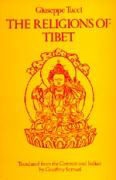En savoir plus
Table des matières
1 Fundamentals
2 The most important schools
3 The conflicts between the schools and their significance for the political history of Tibet. The office of Dalai Lama
4 The figure of the religious teacher (bla rna)
4. The doctrines of the most important schools
1 Assumptions common to all schools
2 The vehicle of the Mantra
3 Investiture and consecrations
4 The Tantric process of transcendence: mental body,maya-body, body of transcendent consciousness
5 Sems and light
6 Substantialism ofthejo nang pa school
7 The bKa' brgyud pa school
8 Tantric practice according to the tradition of the Bla na med rgyud
9 The rNying mapa school
10 The gCod tradition
11 Conclusion. The special nature of the Lamaist teaching of salvation
Appendix: The process of transformation of Sems and rLungs
5. Monkhood, monastery life, religious calendar and festivals
1 Organization of monastic community: hierarchy and offices
2 Religious calendar and festivals
3 The hermits' way oflife
4 The property of the monastery and its administration
6. The folk religion
1 General characteristics
2 Man face to face with divine and demonic powers
3 Personal protection and protection ofthe house
4 The soul
5 Death
6 The bsangs or suffimen (offering of incense)
7 Looking into the future:·investigating the favourable or unfavourable omens for an action
8 The protection of property and of flocks
9 Final considerations
7 The Bon religion
Chronological table
Notes
Bibliography
1 Tibetan sources
2 Books and articles
Index
A propos de l'auteur
Giuseppe Tucci was Professor of Religion and Philosophy at the University of Rome. Geoffrey Samuel is professor of anthropology at the University of Newcastle, New South Wales.
Résumé
Applies a systematic analysis of parallels and interconnections among the religious practices of Tibetans. With a description and appreciation of rituals, architecture, and artifacts, this book offers a comprehensive rendering of the religions of Tibet - minus all the myths.

